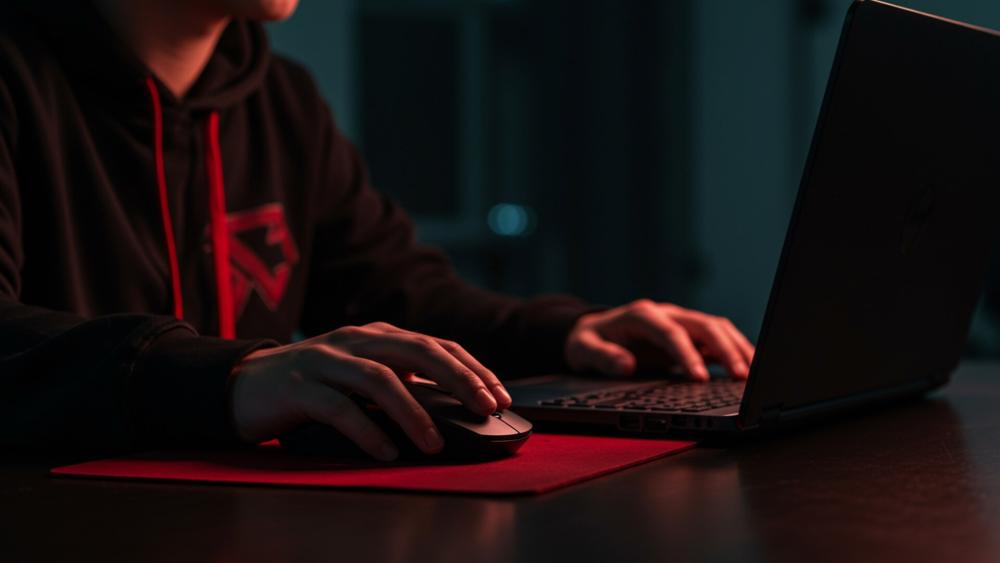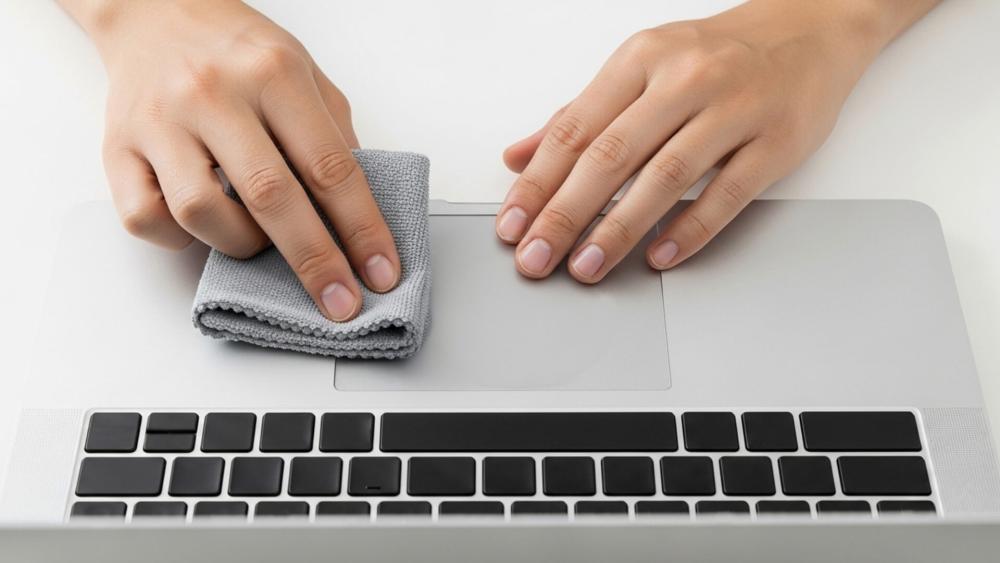POSTED: 19 September, 2025
How to Unlock Mouse on Laptop: Ways to Unfreeze a Mouse
There’s nothing more frustrating than when your laptop mouse unlock shortcuts don’t work, leaving your cursor frozen in the middle of the screen. Whether you rely on the built-in touchpad or a wireless mouse, losing control of your pointer can bring your work, gaming session, or browsing to a halt. Fortunately, most of the time it’s a simple issue that can be fixed in minutes without needing professional help.
In this guide, we’ll go through the most common reasons why your laptop mouse or touchpad may stop responding and the practical steps you can take to unfreeze a laptop mouse. From quick keyboard shortcuts to deeper software and hardware fixes, we’ll show you exactly how to get your cursor moving again and prevent future issues.
Common Reasons Why Your Laptop Mouse Freezes:
Before you can properly fix the issue, it helps to understand what’s causing the problem. A frozen cursor is often linked to either software glitches or hardware problems, and knowing the likely cause can save you time when troubleshooting. Here are some of the most common reasons:
- Accidental Touchpad Disablement: Many laptops have a function key that toggles the touchpad on or off. Hitting it by mistake can cause your laptop's mouse to stop working.
- Software Glitches or Driver Conflicts: Outdated or corrupted drivers can cause your cursor to freeze unexpectedly.
- Operating System Updates: Sometimes, after a Windows 10 or Windows 11 update, users notice their touchpad not working correctly until drivers are refreshed.
- Hardware Faults: A faulty touchpad, loose connection, or worn-out component can also lock the cursor.
- Wireless Mouse Issues: If you’re using an external device, low battery, Bluetooth drops, or USB dongle problems could leave the laptop cursor frozen.
Understanding these triggers helps you pinpoint whether it’s a quick fix like toggling the function keys or something that might require a driver reinstall.
Quick Fixes to Unlock Your Laptop Mouse:

When your cursor refuses to move, there are a few easy steps you can try before diving into advanced troubleshooting. These quick fixes often resolve the problem straight away.
1. Check If the Touchpad is Disabled:
Many laptops include a dedicated keyboard shortcut to toggle the touchpad. Look for an Fn key combination (often Fn + F5, F6, or F9, depending on the brand). If you’ve pressed it by mistake, the touchpad will stop working until you enable it again. You can also check your laptop settings:
- On Windows 10/11: Go to Settings > Devices > Touchpad and ensure it’s switched on.
- On macOS: Open System Settings > Trackpad and confirm the trackpad is enabled.
2. Restart Your Laptop:
It may sound obvious, but restarting clears temporary software glitches. A simple reboot is often enough to unfreeze a laptop mouse and restore normal function.
3. Use an External Wireless Mouse as Backup:
If the touchpad isn’t responding, plugging in or connecting a wireless mouse is a quick way to keep working while you troubleshoot. Many users prefer keeping one in their laptop bag as a reliable backup.
These quick steps usually solve the problem. If not, you may need to look at driver updates and settings, which we’ll cover next.
Software Solutions for Touchpad Issues:

If the quick fixes didn’t get your laptop's mouse unlocked, the problem may lie in your software or drivers. Updating or adjusting settings can often solve persistent issues.
1. Update or Reinstall Touchpad Drivers:
Touchpad drivers allow your system to communicate properly with the hardware. If they’re outdated or corrupted, your laptop's touchpad not working is a likely outcome.
- Windows 10/11: Open Device Manager > Mice and other pointing devices, right-click your touchpad, and choose Update driver. If issues continue, uninstall and restart your laptop. Windows will reinstall the driver automatically.
- macOS: While Macs don’t rely on external drivers in the same way, resetting the System Management Controller (SMC) or trackpad settings can help fix stubborn freezes.
2. Adjust Touchpad Settings:
Sometimes the touchpad not working on Windows 10 is due to overly sensitive or conflicting settings. Navigate to Settings > Devices > Touchpad and tweak sensitivity or gesture options. On a Mac, check System Settings > Trackpad for gesture conflicts or disabled options.
These tweaks often bring the cursor back to life without needing hardware repairs, making them one of the best ways to unfreeze a laptop mouse.
Hardware Fixes and Maintenance:

If software adjustments don’t solve the problem, your frozen cursor could be down to a hardware issue. Here are a few things to check before considering repairs.
- Clean the Touchpad Surface: Dust, grease, or moisture can cause the touchpad to misread inputs, leading to a laptop mouse problem. A quick wipe with a soft, dry microfibre cloth often helps.
- Check USB Ports or Dongles: If you’re using a wireless mouse, inspect the USB receiver or Bluetooth connection. Switching the dongle to another port or replacing batteries can instantly fix the issue.
- Test with External Devices: Plugging in a USB or wireless mouse is a good way to confirm if the fault lies in the touchpad itself.
- When to Replace a Faulty Touchpad: If your laptop touchpad not working problem persists despite software fixes, it may be time to consider repairs or upgrading to one of the best touchpad laptops available today.
- Helpful Add-ons: Investing in quality laptop accessories like cooling pads or protective covers can keep your device running smoothly and prevent physical damage.
Simple hardware checks and proper maintenance can extend your laptop’s lifespan and keep your cursor responsive.
Advanced Troubleshooting:
If the usual fixes don’t resolve your frozen cursor, more in-depth methods can help unlock your laptop mouse and restore full functionality.
- Boot into Safe Mode: Running Windows in Safe Mode disables unnecessary software and lets you test whether third-party apps or drivers are interfering with your touchpad. If the cursor works in Safe Mode, a recently installed programme could be the culprit.
- System Restore: If your laptop touchpad not working issue began after a Windows update or new driver installation, rolling back to a restore point may fix it. Go to Control Panel > Recovery > Open System Restore.
- BIOS/UEFI Settings Check: Some laptops have touchpad options hidden in BIOS or UEFI. Restart your laptop, enter the BIOS (usually by pressing Del, F2, or Esc during boot), and ensure the touchpad is enabled.
- Reinstall the Operating System: As a last resort, a clean OS reinstall can eliminate deep-rooted software errors that cause the cursor stuck on laptop problem. Be sure to back up your data first.
These advanced steps aren’t needed for most users, but can be essential if your laptop cursor freezing issue persists after simpler fixes.
Preventing Laptop Mouse Problems in the Future:
Once you’ve managed a successful laptop mouse unlock, the next step is making sure it doesn’t keep happening. A bit of regular care and forward planning can save you from future frustrations.
- Keep Your System Updated: Regular Windows or macOS updates include patches that prevent issues like a touchpad not working after an upgrade.
- Update Drivers Regularly: Out-of-date drivers are one of the most common causes of a laptop cursor frozen problem. Check Device Manager (Windows) or System Settings (Mac) every few months.
- Protect Your Hardware: Using protective laptop accessories, such as keyboard covers and sleeves, helps prevent dust and debris from interfering with your touchpad.
- Carry a Wireless Mouse: Keeping a spare wireless mouse in your laptop bag ensures you can keep working or gaming while you troubleshoot the touchpad.
- Consider a New Device: If your current machine repeatedly suffers from cursor problems, upgrading to one of the best touchpad laptops could save you time and stress.
Proactive care means you’ll spend less time unfreezing your cursor and more time enjoying a smooth laptop experience.
It’s a Wrap!
A frozen cursor can be a real headache, but with the right steps, a laptop mouse unlock is usually quick and straightforward. Whether it’s as simple as pressing a function key, updating drivers, or giving your touchpad a clean, most issues can be solved without professional repair. For tougher cases, advanced troubleshooting ensures you can still get your system back in working order.
Keeping your laptop well-maintained, investing in quality laptop accessories, and carrying a wireless mouse as backup are smart ways to avoid being caught out again. And if your device is constantly giving you trouble, upgrading to one of the best touchpad laptops might be the best long-term fix.
FAQs - Laptop Mouse Unlock
1. How do I quickly unlock the mouse on my laptop?
You can usually enable the touchpad again using the Fn key combination or by checking the touchpad settings in Windows or macOS. Restarting your laptop can also resolve temporary freezes.
2. Why is my laptop touchpad not working after an update?
It’s often caused by outdated or incompatible drivers. Updating or reinstalling the touchpad driver usually fixes the problem.
3. How do I fix a frozen cursor on Windows 10?
Try enabling the touchpad in settings, updating drivers through Device Manager, or restarting the system. If these don’t work, check for recent software conflicts.
4. Can a wireless mouse work if the touchpad is broken?
Yes, a wireless mouse can act as a complete replacement if the touchpad fails, making it a reliable backup option.
5. How do I enable the touchpad again if it’s disabled?
Press the function key (often Fn + F5, F6, or F9), or go into Settings > Devices > Touchpad in Windows to turn it back on. On Mac, check System Settings > Trackpad.